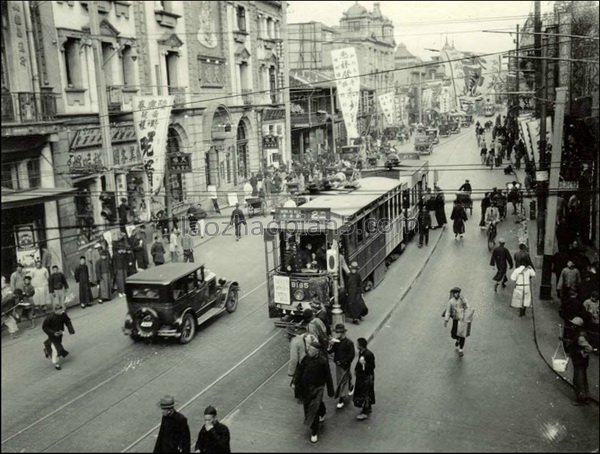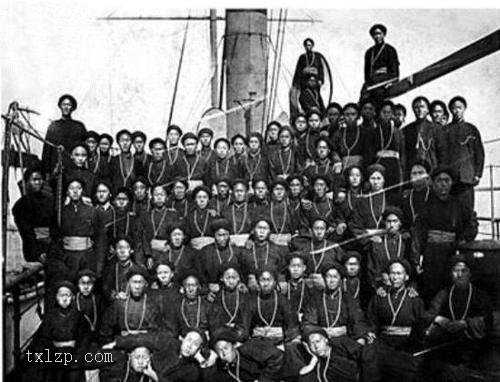[Miao Bingtai’s “Emperor Qianlong’s Imperial Suit Image” axis]
The “Emperor Qianlong’s Imperial Suit Image” axis, painted by Miao Bingtai in the Qing Dynasty during the reign of Qianlong, is made of silk, with colors, 253 centimeters vertically and 146.2 centimeters horizontally
This picture depicts the portrait of Emperor Qianlong sitting upright in winter clothes. According to the custom of not writing the famous inscription on the imperial and empress dress portrait, this painting belongs to an unknown work. According to the old yellow ink inscription on its painting set, “On the auspicious October day of the 56th year of Qianlong, the Qing Dynasty painted the axis of the Hongli imperial costume.” This painting was painted in 1791, and the Emperor Qianlong was supposed to be 80 years old (the virtual age of 81). Therefore, this is a birthday portrait specially painted for wishing the Emperor Qianlong a long life of 80 years. According to Jiang Baoling’s “Modern Words of Molin” in the Qing Dynasty, “Fifty years after Qianlong’s reign, all royal faces were painted with respect and dignity.” It can be inferred that the author should be Miao Bingtai, a court painter who was “famous and influential in the years of Qianlong and Jiajia.”
The era of Miao Bingtai was the heyday of Chinese portrait painting. In terms of creation, the expressive techniques became more mature, forming two major genres of realism, “A heavy layer of ink bone is formed, and then painted to capture the color of the old and young. The spirit has long been passed down in the ink bone, which was the learning of Bochen in central Fujian. A light ink is used to outline the five facial organs, and all of them are rendered in pastel, which is the inheritance of painters in the south of the Yangtze River.” (Zhang Geng of the Qing Dynasty, “Records of the Painting Expedition of the National Dynasty”). Miao Bingtai integrated these two painting theories, emphasizing both ink bone and line drawing, as well as color and halo dyeing. In this painting, Miao first used a light ochre or decayed pen to delineate the outer contour of the face, as well as the eyebrows, eyes, mouth, nose, and other parts. Then, depending on the muscles and bones, they were baked and dyed in different shades of ochre to reveal the concave and convex changes of the facial bones, especially making the nasal bones tall and full of three-dimensional feeling. To truly depict the aging features of Emperor Qianlong in his late years: sparse whiskers, loose facial muscles, eyes that lost their intellectual brilliance, and a tired expression. However, through these external depictions, it can still be seen that the Emperor Qianlong reigned in the world and had an inner imperial aura of self respect
This painting bears the seal of Zhu Wenxi from three sides, which was commonly used by Emperor Qianlong in his later years as the “Treasure of Eight Symbols and Eight Concepts”, “Treasure of the Ancient Heavenly Son of the Five Blessings and Five Dynasties Hall”, and “Treasure of the Supreme Emperor”, to show his appreciation and affection for this painting
Miao Bingtai (1744-1807), with the character Xiangxian and the name Jitang, was born in Jiangyin (now part of Jiangsu Province) and is skilled in drawing figures, flowers, and especially portraits. He once painted portraits in Yunnan, Guizhou, Guangxi, and other places to seek vitality. Later, I studied in places such as Jiangsu and Hangzhou, and my painting skills gradually matured. In the 49th year of Qianlong’s reign (1783), during Emperor Qianlong’s sixth tour to the south, the Miao family was selected as “a poet who presented poems to commemorate his prosperity, and was then invited to participate in the examination.”. After Miao entered the palace, due to his pursuit of not only realistic and realistic depictions of appearance, but also the expression of the inner spiritual temperament of the characters, his artistic pursuit of conveying the spirit through form was completely in line with the aesthetic orientation of Emperor Qianlong’s combination of form and spirit. Due to the frequent popularity of his paintings, he was awarded the title of Cabinet Secretary by ordinary people, and finally served as a military doctor. At the same time, he became a professional painter of portraits of Emperor Qianlong between the ages of 70 and 89
![图片[1]-Miao Bingtai’s portrait of Emperor Qianlong’s court uniform-China Archive](https://chinaarchive.net/Warring States period/painting/54331[1024].jpg)



![[Qing Dynasty] British female painter—Elizabeth Keith, using woodblock prints to record China from the late Qing Dynasty to the early Republic of China—1915-China Archive](https://chinaarchive.net/wp-content/uploads/2022/11/image-191x300.png)

